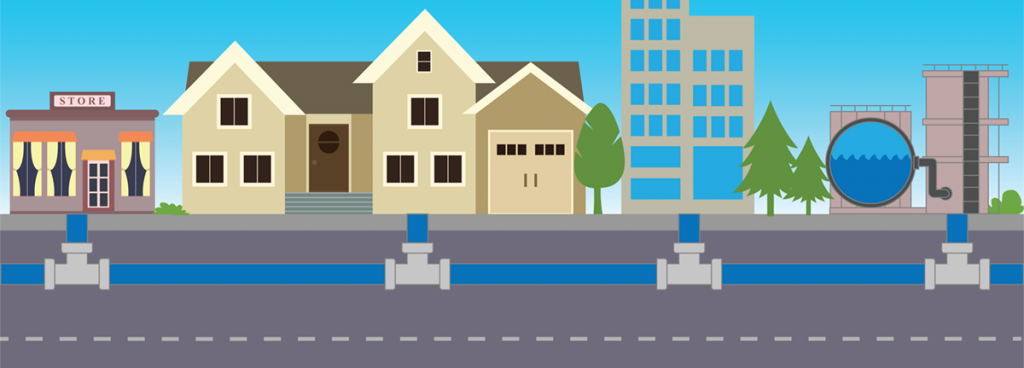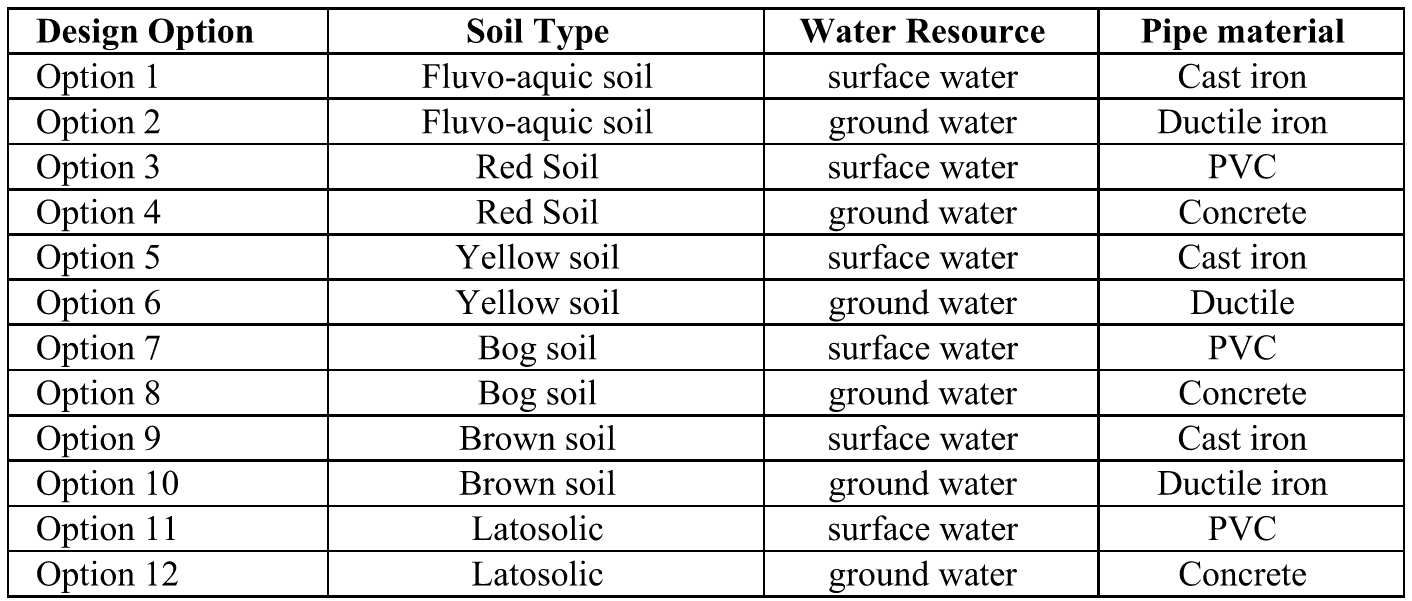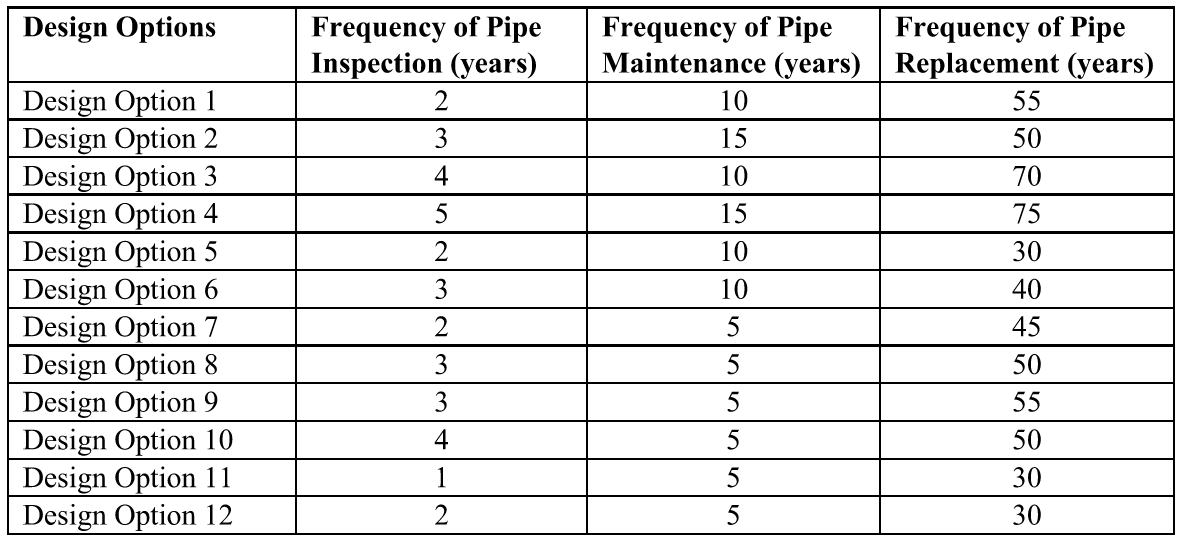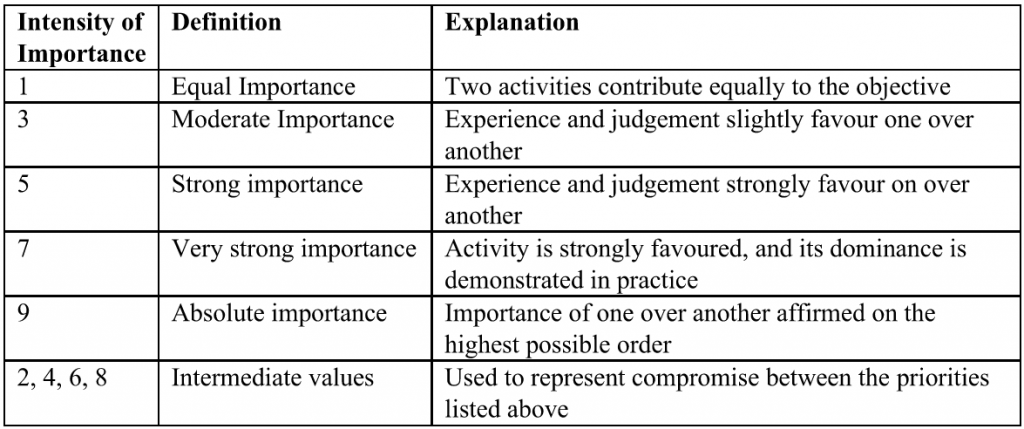Background
Urban water distribution system has a huge impact on human quality of life. The purpose of the system is to deliver water with a suitable amount and appropriate quality. During the process of distribution, there are many factors that might cause the contamination and deterioration of water quality. For instance, growth of urbanization, industrial factors, construction etc. Decisions on the water resources and materials for water distribution might help to maintain the quality of the water slightly.
Figure 1: Flow Diagram of Water Distribution System
As it’s shown in Figure 1 Flow diagram of Water Distribution System, the system distribution pipelines start from the natural resources including surface water and underground water. Since there are more than 3000 antibiotics have been used to treated diseases and combat in humans’ beings. Antibiotics in soil may transfer into water environment and decrease groundwater biological contamination significantly. (Chen, et al., 2021) Choosing water natural resources that has high content of these antibiotics might improve the water quality. This project focuses on effects of predicted log Kd of three antibiotics in soil environment including Oxytetracycle(OTC), Sulfatemathazine (SMZ), and Norfloxacon (NOR). The model of predicted log Kd can be described as the following equations:
Only six of natural soil sample datas are selected from 23 natural soil samples from reference and implemented to this assignment.
Moreover, choosing appropriate material for distribution pipes has also huge impact on biological contamination of water. Since the chemical stability of iron corrosion scales and microbial community of biofilm in distribution pipe can have great impact on the iron corrosion and corrosion release, particularly under the situation of source water switch.
Design Option
There are 12 design options are implemented in this assignment with changes in 3 parameters including soil type which is a indicators for antibiotics, water resources and pipe material which have impact on the corrosion of the water distribution pipes.
Table 1: Design Options
The 16-inch (400-mm) pipe with l2-m length is implemented into the model in this assignment. The below table shows density and weigh per length of 16-inch pipe.
Table 2: Pipe Material Properties
Most common problems of cast and ductile iron pipe that leads to pipe failure are internal corrosion, joint misalignment, leakage, corrosion, and casting manufacturing flaws. PVC and Polyethylene pipes have likelihood to cause the following problems including excessive deflection, joint misalignment, leakage, longitudinal breaks from stress, exposure to light, too high internal water pressure or frequent surges in pressure, expose to solvents, hard to locate when buried, and damage can occur during tapping. Concrete cam also lead to corrosion in contact with groundwater high in sulphates and chlorides. Most of concrete pipes are heavy which can be difficult to alignment.
Life Cycle Inventory Timeline
The following table shows the frequency of each event. According to the case study of water distribution in USA, most of pipes by length fall into the 5- to 50-year-old age range, numerous pipes exceed 75 years of age, with spike in the 85- to 90-year-old range. (Y, 2013) The implemented frequencies of pipe inspection are varying from 1-5 years. The frequencies of pipe maintenance are assumed to be in range of 5-15 years. The frequencies of pipe replacement are prescribed from 30-75 years.
Table 3: Predicted Value of log Kd for Antibiotics
The below figures present results from timlineS package which starts from 1st of September 2022 with 75-year lifetime.
Life Cycle Inventory and Analysis
The following table shows the input value for defined function.
Table 4: Prescribed Input Value
Multi-criteria Decision Analysis – Analytic Hierarchy Process (AHP)
Analytic Hierarchy Process (AHP) is one of the widely-used multicriteria methods. This technique implements process of rating alternatives and aggregating to find the most relevant alternatives are integrated. The technique is employed for ranking set of alternatives or for the selection of the best in a set of alternatives.(Hopkins, 2001) The pairwise comparison values of design options based on each criterion is assumed by using 1-9 Saaty’s scale as seen in the below table (R, 1987).
Table 5: Saaty’s Scale
Multi-criteria Decision Analysis – Technique for Order of Preference by Similarity to Ideal Solution (TOPSIS)
The technique for order of preference by similarity ideal solution (TOPSIS) is part of the analytical multi-criteria decision-making technique. The method is first introduced by Yoon and Hwang in 1981. (Ching-Lai Hwang, 1981) The main idea of this technique, the preferred alternative is the one with the most close-to positive ideal solution and the further to the negative ideal solution. The method requires definition of weight of each criterion. In this assignment, corrosion of the distribution pipe has highest weight, and values of log Kd of each antibiotic have less importance. In addition, the more negative estimated corrosion rates are, the higher chance of distribution failure is. The more antibiotics expose in the nature, the less water can be biologically contaminated. All of criterion are defined to be maximized. TOPSIS() method provided by MCDA package has been implemented to the model.
REFERENCES:
Bhatt, B. V., & Paneria, D. B. (2017). Modernization in Water Distribution System. New Horizons in Civil Engineering (NHCE-2017). Surat, Gujarat, India.
Chen, Y., Ming, T., Shen, B., Luo, W., Wang, H., & Wang, H. (2021). Evaluation Method of Pipe Corrosion Based on the Natural Frequency I: Corrosion of external surface of pipe. Journal of Physics: Conference Series
Ching-Lai Hwang, K. Y. (1981). Multiple Attribute Decision Making. In Lecture Notes in Economics and Mathematical Systems (pp. 58-191). Berlin, Heidelberg, New York: Springer-Verlag .
Gong, W., Liu, X., He, H., Wang, L., & Dai, G. (2012). Quantitatively modeling soil-water distribution coefficients of three antibiotics using soil physicochemical properties. Chemosphere, 825-831.
Hopkins, L. D. (2001). Multi-attribute Decision Making in Urban Studies. In International. Encyclopedia of the Social & Behavioral Sciences (pp. 10157-10160).
R, S. (1987). THE ANALYTIC HIERARCHY PROCESS-WHAT IT IS AND HOW IT IS USED. Pittsburgh: Pergamon Journals.
Scheidegger, A., Leitão, J. P., & Scholten, L. (2015). Statistical failure models for water distribution pipes – A review from a unified perspective. Water Research, 237-247.
System, C. o. (2006). Drinking water distribution systems: Assessing and reducing risks. Washington, D.C.: National Academy of Sciences.
Y, P. M. (2013). Life-cycle energy analysis of performance- versus age-based pipe replacement schedules. Journal – American Water Works Association, E721-E732.
Yang, F., Shi, B., Bai, Y., Sun, H., Lytle, D. A., & Wang, D. (2014). Effect of sulfate on the transformation of corrosion scale composition and bacterial community in cast iron water distribution pipes. Water Research, 46-57.








